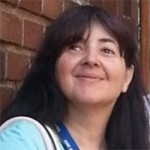Title:
Advanced multi-scale and multi-modal three-dimensional imaging and modelling of flow properties in porous rocks Abstract:
The textural and geometrical properties of pore networks, including pore size distribution, shape, connectivity, and tortuosity, play a crucial role in the storage and migration of geofluids within porous reservoir rocks. Variability in these properties arises from primary depositional conditions, diagenetic processes, and deformation, posing significant challenges for reservoir characterization and planning in energy exploitation or CO2 storage scenarios. Accurate volume estimation and fluid transport properties are essential and can be derived through the integration of outcrop analogues, core samples, and petrophysical analysis. The recent advances in X-ray and neutron 3D imaging techniques in static and dynamic conditions, coupled with computational fluid dynamics, can offer a deeper understanding of how the pore network properties influence fluid transport. In addition, dual porosity/permeability synthetic models can be constructed to evaluate the impact of macrofractures on storage and transport in porous carbonate reservoir analogues at the microscale. In this talk the results of several case studies will be presented. Bio:
Dr. Mancini is a material science physicist who has lead the TomoLab facility (two instruments) at Elettra devoted to microfocus X-ray Computed Tomography since 2005. Since May 2022 she has been working as senior researcher in the Department of Materials of the Slovenian National Building and Civil Engineering Institute in Ljubljana (Slovenia). Her research activity deals with: hard 2D and 3D X-ray imaging of solid and liquid materials, application to the morphological and textural characterization of geomaterials (e.g. igneous, reservoir and metamorphic rocks, paleontological studies, …), innovative materials (e.g. composites, light concrete, green batteries, …), natural and cultural heritage studies (e.g. paleo-teeth and fossil bones, ancient musical instruments, insects in amber, ...), in situ and real-time CT experiments under high-temperature, mechanical testing, operando conditions. The investigation methods are mainly absorption and phase-contrast X-ray and neutron imaging often combined with X-ray and neutron diffraction and scattering-based techniques. She has a strong background in 3D/4D data processing and analysis and, in this framework, since 2002 has been coordinating the Pore3D project for the development and maintenance of a software library devoted to the processing and quantitative analysis of CT images (https://github.com/ElettraSciComp/Pore3D). |

